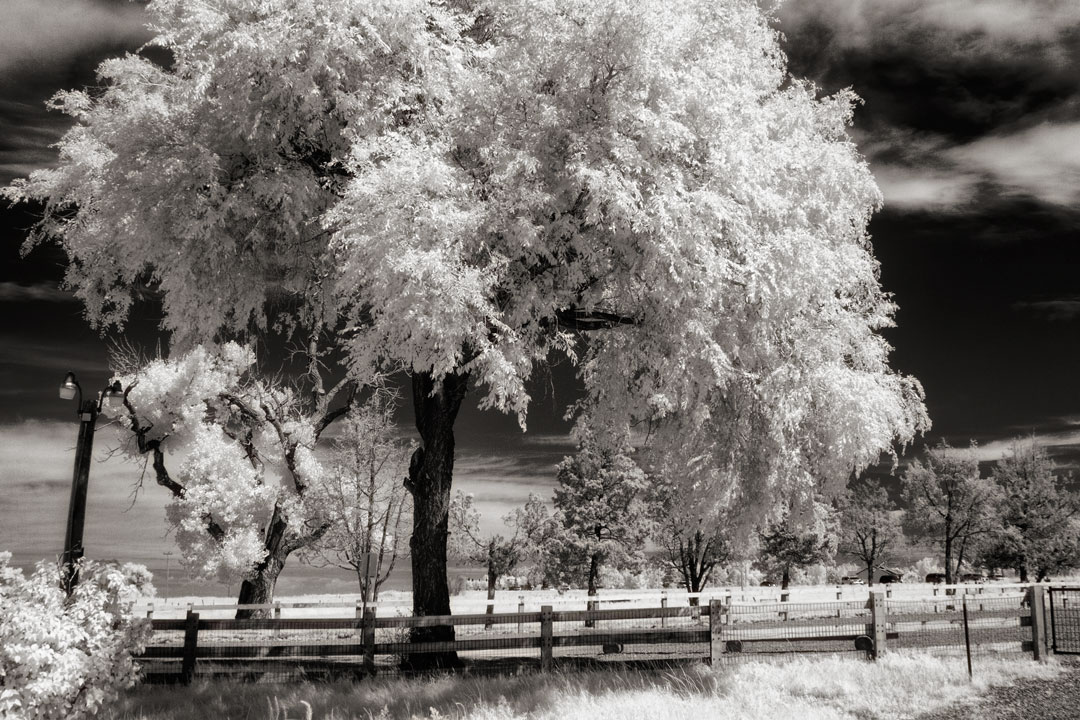Today’s Post by Joe Farace
“The clearest way into the Universe is through a forest wilderness.” ―
If you’re not new to this blog then you already know that my personal philosophy is that photography should be fun. And if you are a new reader, WELCOME.
Part of having fun with photography is trying new things, which is part of my recent fascination with film photography. To me, infrared photography is also lots of fun because it can help you look at your world in a new way and lets you create images that look unlike any other technique you’re likely to try. That alone is a good enough reason to try digital infrared photography.

How I made this shot: I photographed this scene at the 17 Mile House Farm Park near Parker, Colorado, which seems to be constantly under restoration since I originally made this shot. I’m sure all the work will be finished real soon now. The camera used was a Panasonic Lumix G6 with Lumix G Vario 12-32mm f/3.5-5.6 lens (at 12mm) with an Av exposure of 1/500 sec at f/11 and ISO 400. Camera had the 665nm Enhanced IR filter conversion from Life Pixel.
Every photographer knows something about shooting under visible light but there are other kinds of light that we can’t see. What we see as red, orange, yellow, green, blue, indigo, and violet are different waves of light. Shorter waves are blue and the longer ones appear red to our eyes. Every color’s wavelength is measured in nanometers or one billionth of a millimeter or microns that are a millionth of a meter. Red light begins at wavelengths of about 0.65 microns. Violet light has wavelengths around 0.4 microns and yellow light waves are 0.6 microns. Your eyes can’t see light with a wavelength longer than 0.7 microns. When we feel the sun’s heat of the on our skin, we also experience thermal infrared light.
For my IR photography, I consider light with wavelengths from 700 and 900nm to be infrared light. Yet this band of infrared light is a thousand times wider than that of visible light and is completely invisible to our eyes. Infrared film and some video cameras are sensitive to what is called near infrared. This is also the type of IR light that most television remote control uses.
Please check out my two YouTube videos—Joe Farace’s Videos—about Infrared Photography: The first one is on Filters, the second video is about IR Camera Conversions.
 Life Pixel does a great job with IR conversions and they have done most of the conversions for my Canon DSLRs and all of my Panasonic Lumix G-series cameras.
Life Pixel does a great job with IR conversions and they have done most of the conversions for my Canon DSLRs and all of my Panasonic Lumix G-series cameras.
Copies of my book, The Complete Guide to Digital Infrared Photography are available starting at $41.99, with used copies at $16.50 as I write this. Creative Digital Monochrome Effects has a chapter on IR photography and is available from Amazon for $21.90 with used copies at a little more than $2.00 and like the IR book would make a great gift for your favorite photographer or yourself.